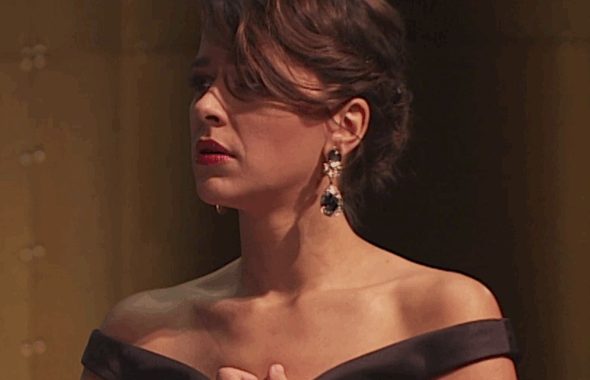
Luigi Rossi (1597-1653)
Oratorio per la Settimana Santa (ca 1641-1645) – extracts
Claudio Monteverdi (1567-1643)
Pianto della Madonna sopra il Lamento d’Arianna SV 288 (1641)
Giacomo Antonio Perti (1661-1756)
Oratorio della Passione (1685) – extracts
Leonardo Vinci (1690-1730)
Maria dolorata – oratorio (1723) – extracts
Antonio Caldara (1670-1730)
Morte e sepoltura di Cristo – oratorio (1724) – extracts
Georg Friedrich Haendel (1685-1759) / Giovanni Battista Ferrandini (1718-1779)
Il Pianto di Maria, HWV 234 – cantate (sd)
Ambroisine Bré Mezzo-soprano
Les Talens Lyriques
Christophe Rousset direction
Turning to seventeenth-century Italian oratorio, Christophe Rousset and his ensemble Les Talens Lyriques present a moving account of the sorrow of Mary, the mother of Jesus. The mezzo-soprano voice takes us from Naples to Venice, to hear musical treasures from sacred works by Rossi, Perti, Handel/Ferrandini and Vinci.
Musical compositions expressing the grief of the Virgin Mary as she stands at the foot of the cross belong to a very ancient tradition. In the seventeenth century they experienced an unprecedented flourishing at the time of the Counter-Reformation, which placed at the heart of its theology devotion to the figure of the Mater dolorosa, a theme that was to be recurrent in the Baroque period. At that same time, great lamentation scenes, playing a prominent part in operatic works, moved Italian audiences.
The oratorio, of which Luigi Rossi was one of the great exponents in Rome, provided some of the most beautiful examples of lamentations of the Virgin Mary. These meditative pieces were written not in Latin, but in the vernacular, i.e. in Italian. Airs and lamentations were also key moments in oratorios for the Passion or for Holy Week, when the figure of Mary was not directly the main subject of the composition.
These works, expressing not only suffering but also great gentleness and tender contemplation, play on the typically Baroque movements of the soul – the affetti – of which Italians were so fond.
© Les Talens Lyriques – Mary Pardoe